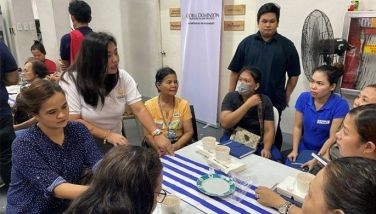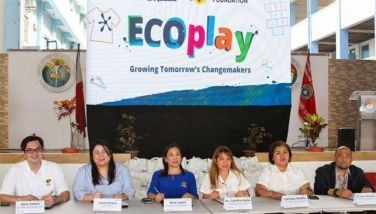The heritage of water
April 18 marked the celebration of the International Day for Monuments and Sites. The date was designated as such by the United Nations Educational, Scientific and Cultural Organization (UNESCO) in 1982. This year’s theme is “The Cultural Heritage of Water.”
In an essay by Dr. Susan McIntyre-Tamwoy found in the website of the International Council on Monuments and Sites (http://www.international.icomos.org), the reason for picking this theme was explained: “Water is one of the key resources required to sustain life. It has led to the development and generation of significant material culture in the form of items, technology and places. How to obtain it, how to store it, how to harness its power and conserve it has motivated human endeavour in a myriad of ways. It
has also been the catalyst for the development of significant cultural practices which have generated intangible cultural heritage values. It has inspired poetry, literature, artistic endeavour such as painting, dance and sculpture. It has informed and inspired the development of philosophies and religious practice. The cultural heritage of water, therefore relates not only to the technology and architecture that humankind has developed to manage, utilize and celebrate its life giving properties but also to those intangible values that have shaped our beliefs and practices.”
The cultural heritage of Cebu illustrates just how water has shaped our way of life. The most obvious example would be the Sinulog, a prayer dance supposedly named after the sea current that the dance mimics. Fluvial processions form part of our religious practice.
The ports in Cebu remind us that Cebu played, and still plays, an important role in trade and commerce. A drive to southern and northern Cebu shows its gorgeous seascapes. Most of the people I meet who have visited Cebu talk about its beaches and seafood, with eating sutukil being among their more memorable experiences.
Because we are an island in the Pacific (as Cebu was advertised in the past to remove its association with our troubled country), we are lucky to have an abundance of products from the sea as part of our daily diet: fish, shrimp, squid, and all kinds of shellfish. I get homesick when I think about the fresh seafood that our suki vendors brought to the house every morning.
They would arrive early in the morning in their rubber boots and skirts with oversized pockets holding their earnings, the big (and sometimes very heavy) basket of fish and other seafood balanced on their heads. We trusted them to give us only the freshest products. When getting change became difficult because the basket was already on their head, they trusted us to get the correct amount from their pockets.
Because of the suki seafood vendors in my life, I never learned to pick fresh seafood at the market.
I have enumerated examples of the heritage of water that we still have. A meditation on cultural heritage requires us to ask what kind of heritage we will be passing on to the next generation. What are we leaving our children? Every few months, the issue of the dwindling water supply of Cebu crops up. While local government units have become more conscious of protecting coastal resources, not enough measures are being undertaken to protect watersheds by preserving existing forests and reforesting denuded areas. That flash floods occur almost always when it rains makes me wonder if future generations will consider flash floods part of their heritage. Then again, with climate change, maybe they will all be living in houseboats in the future.
Reading about the Adopt-a-River or Linis Estero Program of the Department of Environment and Natural Resources makes me hopeful that we will be more conscious about how important water is in our lives. The Guadalupe River, a river near my home which I associated with floating garbage and escaping criminals when I was a child, is part of the program. I dream of seeing it clean and clear in my lifetime and of holding celebrations of future heritage days along its banks.
* * *
Email: kay.malilong@gmail.com
- Latest
- Trending























